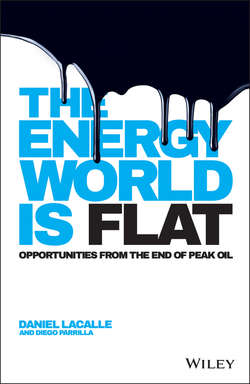Читать книгу The Energy World is Flat - Lacalle Daniel - Страница 8
На сайте Литреса книга снята с продажи.
Chapter One
The Mother of All Battles. The Flattening and Globalization of the Energy World
Fracking and the collapse in US natural gas prices
ОглавлениеWhile Fukushima created a demand shock and sharply higher global LNG prices, a quiet revolution had been taking place in North America for over a decade that had transformed the supply and drastically reduced prices of domestic US natural gas.
For decades, engineers knew about the vast amounts of natural gas resources that were trapped inside shale formations, but had not found a way to extract them commercially on a large scale. But the supply revolution which had started quietly in the Barnett Shale, Texas, in the early 2000s changed that.
“Not sure I told you before”, a senior member of one the largest sovereign wealth funds in the world told me, “I have a degree in nuclear engineering. My first job during the 1970s was to research the application of nuclear technology to extract natural gas from shale formations. It has taken a few decades, and a different technology, but I guess my fellow engineers have finally won”.
Indeed, production engineers had found a solution to unlock the gas trapped inside shale rock formations thanks to the combination of horizontal drilling and hydraulic fracturing. And the potential was massive.
The United States, once thought to be in critical shortage of natural gas, was now enjoying an abundance with enough supply to cover over 100 years of demand.
I remember the first time I heard “US energy independence is real”. It was in 2006, and I was meeting large oil and gas producers in Houston. I had endless debates about decline rates, lack of commerciality, environmental risks, the impossibility to replicate the success of the Marcellus Shale elsewhere in the United States, and other considerations. At that time the view was that shale gas would not be economical below$8/MMBtu and that decline rates would make the “fad” disappear soon.
But the reality turned out to be quite different.
By April 2012, following the unusually warm winter in North America, the price of US natural gas had fallen to $2/MMBtu,3 levels not seen for over a decade. The words of a good friend resonate in my head: “never bet against human ingenuity”.
The divergence in prices between North America and Asia had indeed been extraordinary. Exactly the same molecules of natural gas were trading at a 1000 % premium across the world. The implications are deep, and go beyond energy markets.
Access to abundant, cheap, and cleaner energy has been an important contributor to the recovery and enhanced competitiveness of the United States relative to the rest of the world. On the other hand, expensive energy has had a negative impact on the Japanese economy and competitiveness.
Looking forward, the combination of political and logistical constraints may keep these extraordinary differentials for several more years, but this will not last forever. The markets are sending strong signals, and the response is simply a matter of time.
3
Bloomberg and NARECO Advisors.
